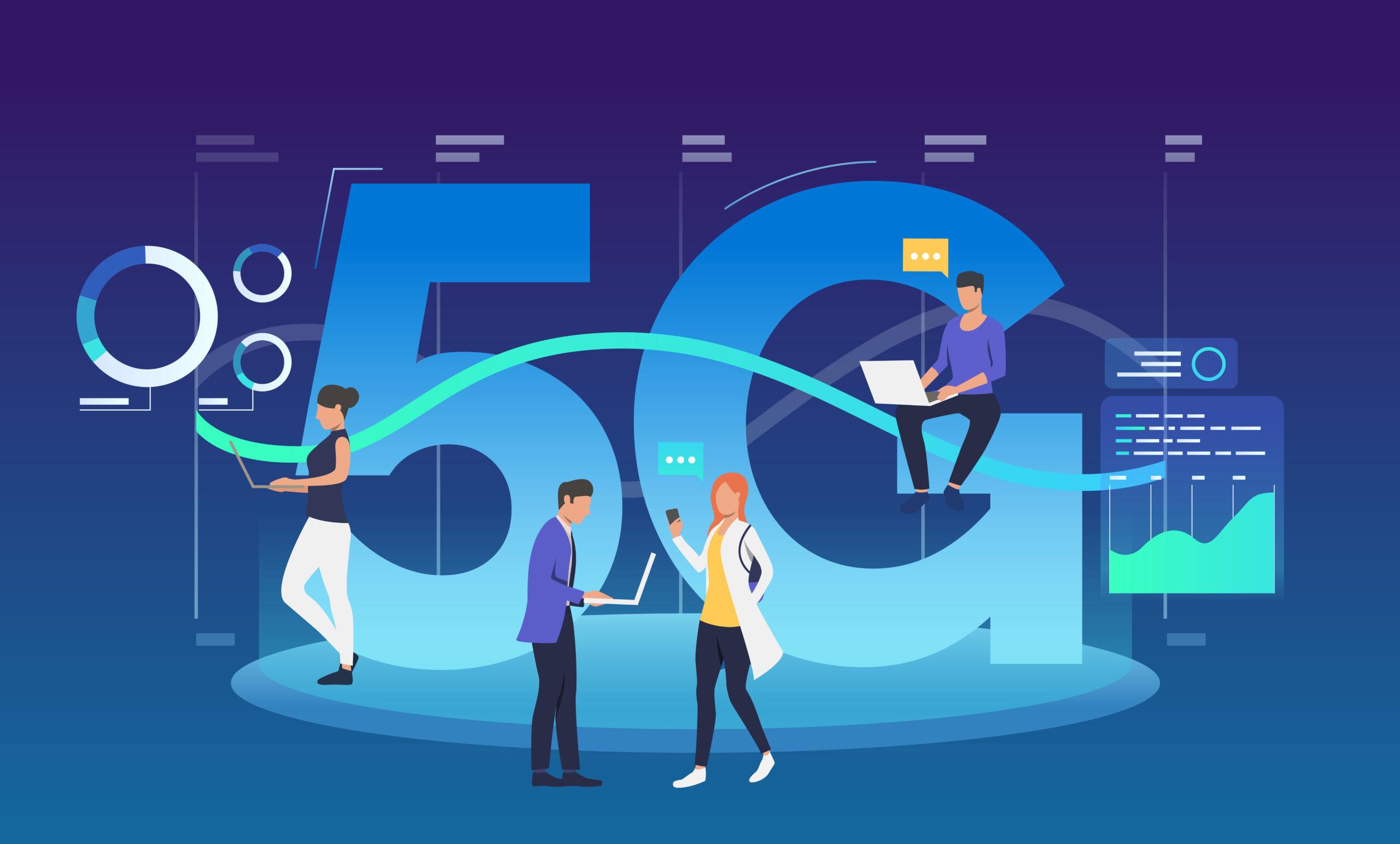If there is one thing living in this rapid digital age has taught us, it is that speed is everything. Innovation in global data transmission speeds has altered our everyday lives; how we acquire news and information, access goods and services, manage our healthcare and money, and tap into the power of the infinite activities that go on behind the scenes to make it all happen. Without high-speed mobile/wireless technologies such as 4G LTE, transformative technologies such as the Internet of Things (IoT), artificial intelligence (AI), and real-time analytics masses of data that need quick transfer would not be conceivable.
5G networks are predicted to be at least 100 times faster than existing 4G networks and lower latency to less than one-thousandth of a second. It offers a world of new possibilities to consumers and organizations, but it can’t be achieved without huge changes to business models, legislation, and how IT infrastructures are implemented.
The coming of 5G will not only alter technology but will also bring a whole new mobile experience. This wireless technology is being launched with the primary purpose to minimize maintenance costs and energy usage.
As 5G technologies have been continually improving, they will no doubt change the way we spend our lives, our communications will be quicker than you can think and our connections will be stronger.
When you think of a future powered by 5G, linked factory equipment that “talks” to each other, mobile internet connection to many devices at the same time, various cars connecting with the roads they pass on, and accessibility to information at unprecedented speeds should come to your mind. This goes without saying that the new generation of technology creates new prospects for telecom service providers.
Source: istockphoto.com
Types of 5G
1. Low-band 5G
Low band is the closest 5G spectrum to 4G and 4G LTE and runs on the closest frequencies to TV and radio stations. It is classic, everyone’s acquainted with it and it’s quite simple in terms of sophisticated frequencies.
This doesn’t imply that low-band 5G isn’t useful, either. This form of 5G can go vast distances. When paired with mid-band and high-band frequencies, low-band 5G will be 10 or more times quicker than 4G speeds. TV stations use it alongside identical frequency bands because of the bands’ capacity to reach huge regions.
However, low-band 5G isn’t as fast as the other kinds, which is why it can go so far. Limited-band 5G has low bandwidth, but it can go far since it has a smaller capacity to deliver data than higher frequencies.
2. Mid-band 5G
Midband 5G is a little more sophisticated than low band, although not the most common of the three forms of 5G. Its spectrum is five times as broad as the low-band spectrum.
While mid-band 5G is broader than low-band 5G and hash a greater ability to transfer bigger quantities of data, it can’t go far. Buildings and other solid objects may impair greater ranges of mid-band 5G, however, the penetration problem is less than the high-band 5G.
3. High-band 5G (millimetre wave)
High-band 5G is practically the opposite of low-band 5G. It can’t reach far, but it has the ultrafast speeds that arise from 5G’s most claimed features.
High-band 5G also has a millimetre wave (MM wave), the spectrum between 30 GHz and 300 GHz that delivers high-speed connection and better download rates. These features have raised worldwide interest in 5G technology. MM waves offer the degree of performance and speed that data centres demand more than low-band or mid-band 5G.
Source: istockphoto.com
How will 5G affect our future?
Below are some of the ways that 5G technology will change our technology favourably.
● Non-Standalone 5G
The 5G network is more likely to deliver a profound shift in mobile technology. The non-standalone 5G networks would reveal what hyper-fast 5G would look like. Bear in mind that these non-standalone 5G networks aim to make use of various radio frequency bands at the same time. They take advantage of two separate larger bandwidth frequencies for quicker speeds. This simply implies that you would be able to download your favourite movie and TV program significantly faster than a 4G LTE network.
● IoT (Internet of things) and Edge Computing
One of the most crucial characteristics of 5G is the fact that it has a huge influence on the Internet of Things (IoT). Even if we have sensors or devices that are capable of talking with one another, they demand various resources.
As 5G enables speed that hasn’t been seen anywhere and low-latency connection in every home, smart gadgets might be readily replaced with terminals. These terminals would obtain their orders or guidance from the edge computing systems that are near them. It will be a whole lot simpler for you to operate health monitors, kitchen appliances, and temperature control systems.
● Small Cell Infrastructure to integrate with the Landscape in a better way
To decrease the expenses for 5G operators, 5G employs a smaller transmitter since they require less energy and electricity. But the main problem with this is that they could only cover a few service regions as opposed to regular 4G towers. Hence, a carrier would feel the need to have more of them so they can be merged better with the landscape.
● Improved Health Care
The availability of ultra-reliable low-latency communication (URLLC) which is a component of 5G has the potential to fundamentally change health care for people. Since URLLC is responsible for minimizing 5G latency, you would be able to see a huge revolution in mobile technology and a world of new possibilities would develop. Patients from rural regions would no longer be obliged to adjust their lifestyle and travel to cities, away from their families and livelihood just to get the quality care and treatment they deserve.
Source: istockphoto.com
Not only that, but there will also be a major advance in precision surgery, telemedicine, remote surgery, and even physical rehabilitation with AR in the years to come. Massive Machine-type Communications (MMTC) are likely to play a significant part in the area of healthcare. With its support, hospitals would be able to establish enormous sensor networks that can be used to monitor patients, their habits, behaviours, and activities using similar sensors in wearables, smartphones, and various linked devices. Besides that, even doctors might use smart tablets to check if the patients are following their prescribed medication. Also, the insurers would be able to keep track of procedures and treatments.
● Autonomous Vehicles
Imagine automobiles conversing with other vehicles on the road. With the coming of 5G around the globe, you would be able to observe autonomous cars grow at the same pace 5G is implemented.
In the years to come, cars would have the capacity to offer performance information and also supply information to manufacturers and drivers about road conditions, security, and more.
Source: istockphoto.com
● Improve broadband
The fast switch to 5G will, no doubt, affect the way you engage with technology daily, however, it is also required if you want to continue utilizing mobile broadband.
In several urban locations, cellular carriers are already running out of LTE bandwidth. In reality, users face poor internet speeds in several places as well. That’s the reason why 5G adds a spectrum in bands that are utilized for commercial broadband traffic.
There are many other ways the 5G technology can affect our world positively but these are the most spoken of for now. Some of the sectors that would be positively affected by the 5G technology are the Education sector, Transport sector, Agriculture sector, Manufacturing sector and many more. Some sectors are still considering if the 5G technology would be beneficial to them or not.
Conclusion
Although 5G is certain to transform the way we consume information, and entertainment and how we engage with one another, the transition will not come suddenly. Even though some businesses have successfully developed 5G-capable devices, it could take more time for the proper availability of 5G but it is believed that the maximum number of 5G connections will exist in the years to come.
Source: istockphoto.com
Once 5G is completely operational, there will be no need for any form of connection or wire to supply entertainment or communications service to your mobile device. It will also bring a lot of opportunities and open doors for many sectors that are ready to dive into and adapt the 5G technology when it is fully operational.
The advent of the 5G technology will also come with a lot of exciting job opportunities as many techs and non-tech experts would be needed to make sure that everything goes well.
While we wait for the 5G technology, innovators are doing everything they can to make sure that when the 5G technology comes, it comes to stay for good and lives up to the expectations of people.









